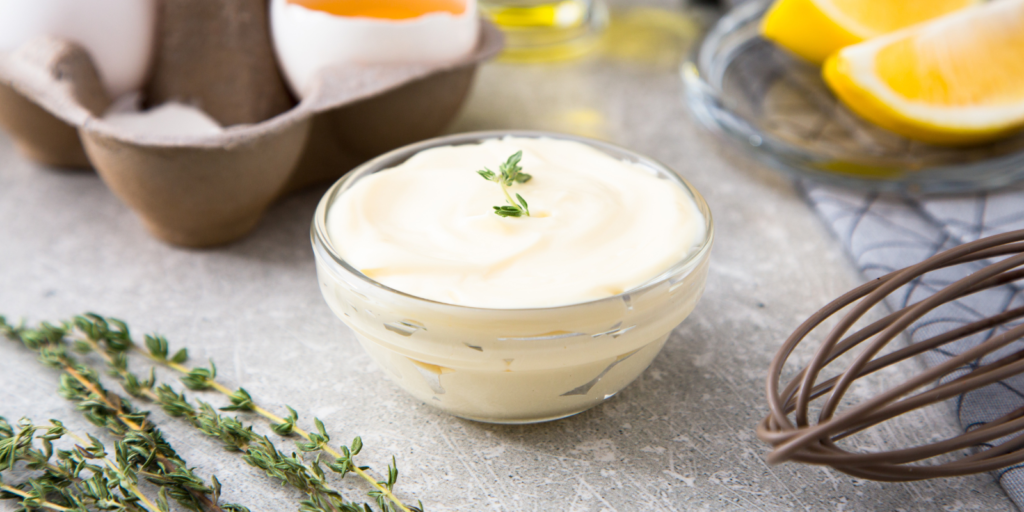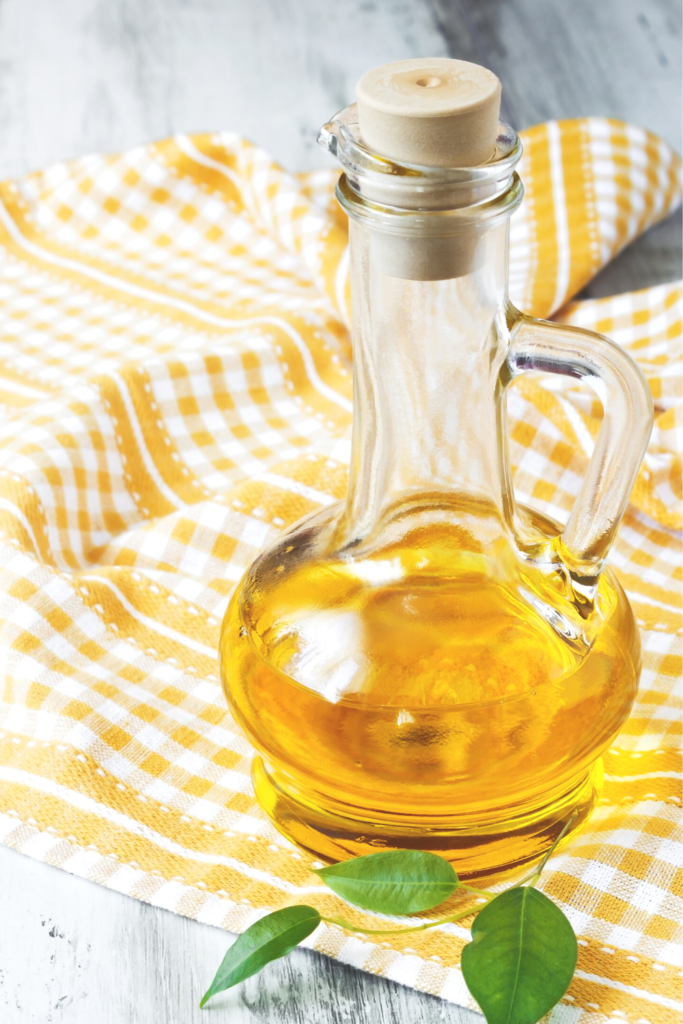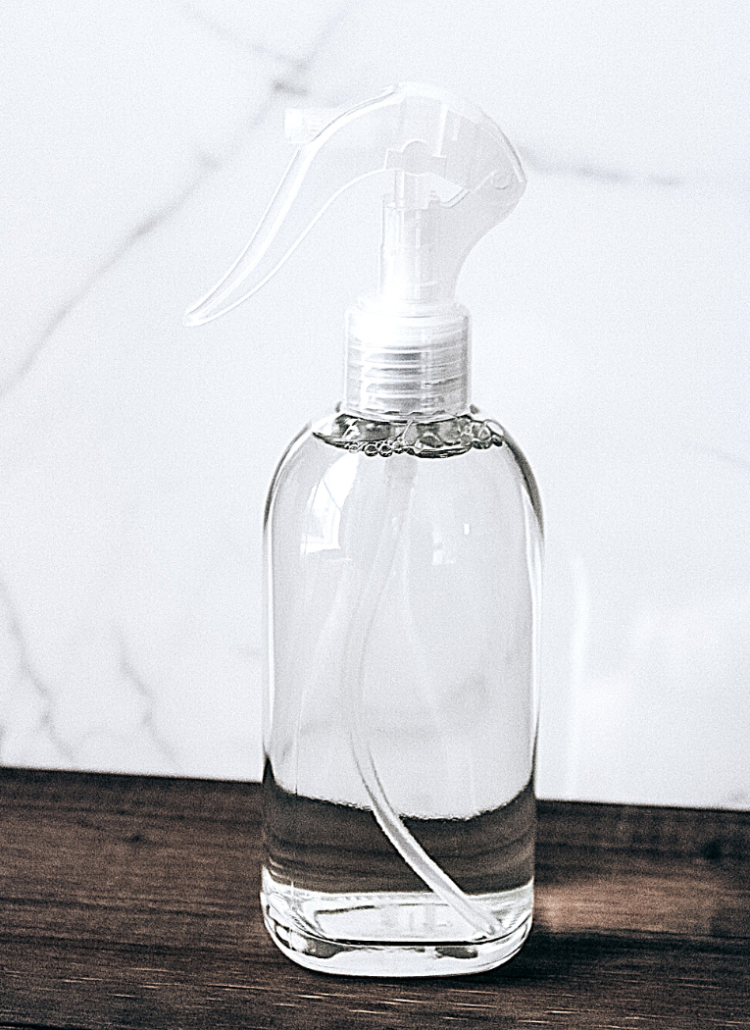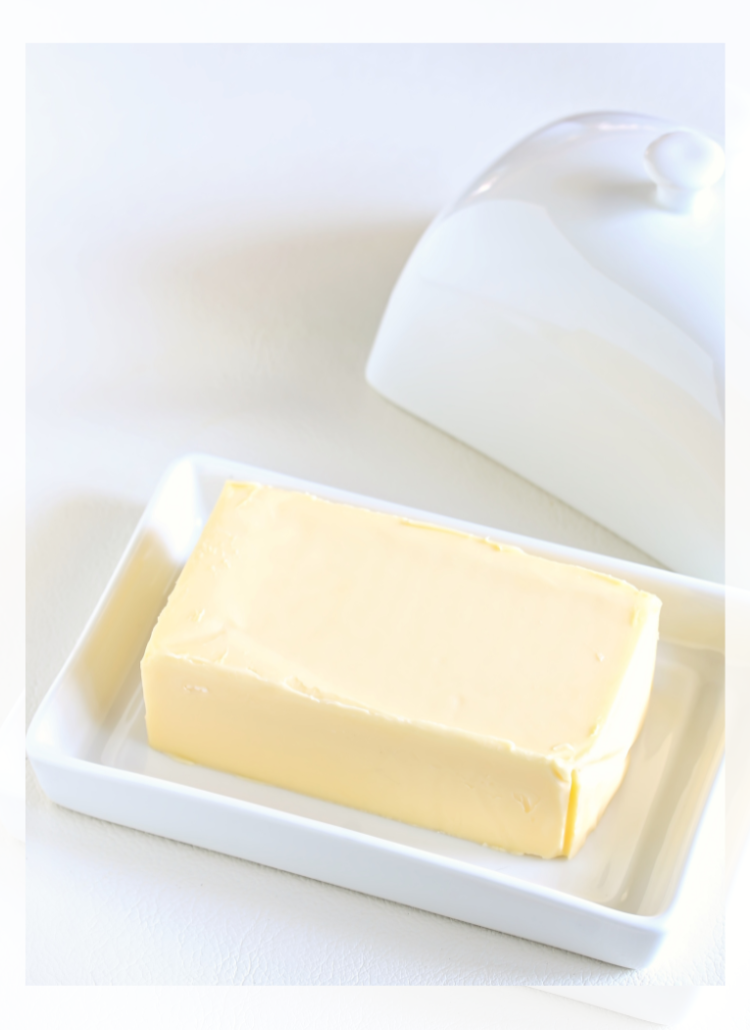Learn how to make homemade mayonnaise from scratch with this five-ingredient recipe. Making mayonnaise requires technique and patience but the result of a delicious fresh taste makes it well worth the effort.

Why should I make mayo from scratch?
Let’s face the truth- mayonnaise in the south is a big deal! The brands we use might as well be the next best thing to sports team rivalries. Some people are more loyal to their jar of mayonnaise than fans in a football stadium when their team is losing! But the downfall with having brands is they all come from the store. Some store-bought items are necessary but I prefer to know exactly what I am putting into my body and feeding my family. Watching and knowing every ingredient that goes into a product delivers peace of mind that satisfies the question of why I suggest substituting the brand label for scratch-made mayo.
What oil should I use?
The type of oil used to make mayo affects the outcome of the taste. Mayonnaise can be made from canola, olive, avocado, sunflower, sesame, vegetable, or soybean oil. I recommend starting with vegetable oil or canola oil when making mayonnaise for the first time. Vegetable oil is a heart-healthy alternative to most other cooking oils. It gives a flavor that is very similar to store-bought mayo which you may prefer when first making the switch.
Avocado oil is also a healthy choice but renders a major price difference compared to vegetable oil. I recommend smart shopping when buying oil to make a product as simple and as cheap as mayonnaise. Local sources such as Aldi and other grocery stores where smart shopping can save money carry avocado and olive oil so I recommend shopping there. Click here for a link to avocado oil on Amazon if you choose not to buy from local grocers or do not have an Aldi near you.
This post contains affiliate links which means I may make a small profit on orders purchased through the links provided.
Cautions to be aware of when choosing oil:
- Olive oil gives a strong, bitter taste compared to using vegetable oil. I want a touch of olive oil taste but excess can ruin the whole batch of mayonnaise. To accomplish this taste, use 1 cup of vegetable oil as the recipe suggests but fold in half a teaspoon of olive oil. It does not take much oil to change the flavor at all; adding too much will cause the mayonnaise to be too liquid or even separate.
- Stay away from extra virgin oil! Making mayo is a chemistry experiment. The process is an emulsion which is the mixture of two liquids that do not normally combine. In this case, the liquid-liquid relationship is between oil and water. The emulsification process can not occur unless there are emulsifiers which in this recipe would be the egg yolk, vinegar, salt, and mustard. Extra virgin oils do not contain the proper molecular compounds to allow the oil to mix with water from the other ingredients. Therefore, you will have a blended egg and a wasted cup of oil when attempting to use extra virgin oil.

Product made with raw egg: is it safe?
I gather locally sourced farm eggs. Search farmer’s markets and locally trusted sources if you do not have access to your own supply of farm fresh eggs. The concern for using raw eggs is bacteria but the safety is something you must evaluate before deciding to get into making mayonnaise. Obviously to keep the product safe, store it in the refrigerator. I personally have no qualms against using a raw egg to make mayonnaise but I want you to be aware of the safety concerns of using it.
Ingredients:
1 egg
1 cup vegetable oil
1/2 teaspoon of salt
1 tablespoon vinegar
1/2 teaspoon mustard
Recommended Tools:
-Wide-mouth mason jar or a flat-bottom bowl to make and store the mayonnaise with ease.
-Immersion blender to control the blending of the ingredients and to avoid having more dishes to wash. Find a link to an inexpensive immersion blender by clicking here.
Homemade Mayonnaise Recipe:
- Add 1 egg to the bottom of the mason jar. Next, add 1 tablespoon of vinegar, 1/2 teaspoon of mustard, and 1/2 teaspoon of salt. Then, pour 1 cup of vegetable oil (or oil of choice) on top of the other ingredients.
- Allow the ingredients to sit in the jar for a few minutes. Giving time for the egg to settle at the bottom and the oil to disperse back to the top is key before blending.
- Insert the immersion blender into the jar until it reaches the bottom. Begin blending the egg until it appears white and creamy. Then begin incorporating the other ingredients by slowly lifting the immersion blender towards the top to blend in the oil.
- The blending process should take 3-5 minutes. The mayo should be able to hold stiff peaks while maintaining a jiggly appeal. Keep the mayo in the mason jar and store in the refrigerator.
How much mayonnaise will this recipe make?
This recipe makes a little more than a cup of mayonnaise. Double the recipe if you have a large family or use a large quantity of mayo in a week. I double the recipe when I make dishes such as chicken salad but also need mayo left over for sandwiches throughout the week.
How long will homemade mayonnaise last?
This mayonnaise recipe last for one to two weeks in the refrigerator. I start fresh weekly to avoid any risks with the raw egg. I meal plan and prepare most of my husband’s dinners for work in one day so I usually make a fresh jar of mayo while preparing other staples for the week ahead.
Homemade Mayonnaise Recipe
Ingredients
Equipment
Method
- Add 1 egg to the bottom of the mason jar. Next, add 1 tablespoon of vinegar, 1/2 teaspoon of mustard, and 1/2 teaspoon of salt. Then, pour 1 cup of vegetable oil (or oil of choice) on top of the other ingredients.
- Allow the ingredients to sit in the jar for a few minutes. Giving time for the egg to settle at the bottom and the oil to disperse back to the top is key before blending.
- Insert the immersion blender into the jar until it reaches the bottom. Begin blending the egg until it appears white and creamy. Then begin incorporating the other ingredients by slowly lifting the immersion blender towards the top to blend in the oil.
- The blending process should take 3-5 minutes. The mayo should be able to hold stiff peaks while maintaining a jiggly appeal. Keep the mayo in the mason jar and store in the fridge for one week.
It might take a couple of tries to master making mayo OR you might find yourself to be a mayo pro after the first batch! Share this homemade mayonnaise recipe or pin it for later.
If you enjoyed this recipe for homemade mayonnaise, follow the Handmade Home tab under the blog page for more condiment recipes and ways to use homemade mayonnaise in cooking.

Where can I buy healthy mayo?
Homemade mayo is a quick and easy alternative to buying from the store. However, I understand the commitment to choosing to make it weekly or as often as needed for your household! If you do not have time or ingredients to make mayo at home, search avocado mayo with Thrive Market! They offer great prices and household staples for organic snacks and products delivered to your door!


